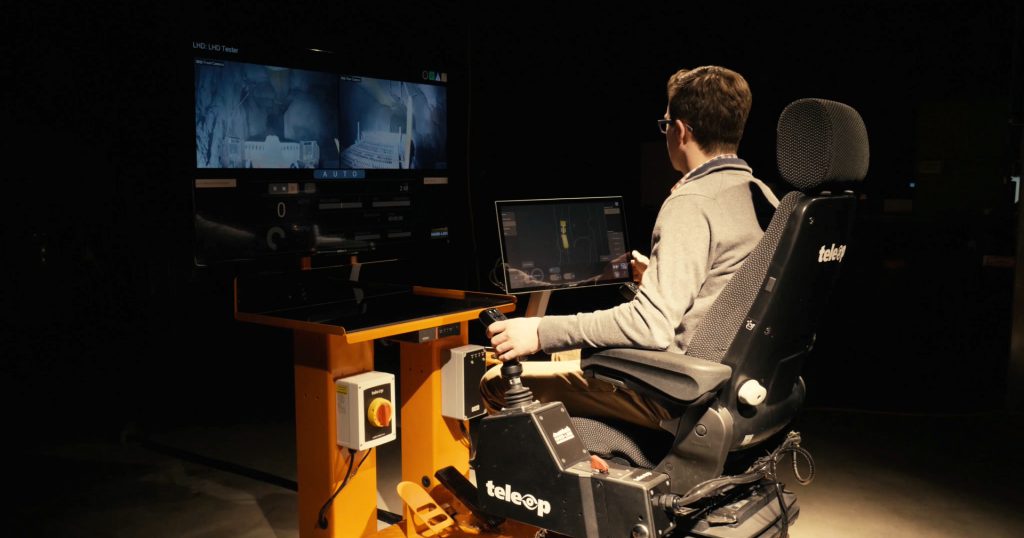Celeste Piercey examines the ways in which the modern mine can thrive, thanks to safety based advancements in remote mining technology. HARD-LINE’s article featured by International Mining Engineer.
With the model for the modern mine being a blend of long-established procedure and cutting-edge technologies, the global mining industry has seen steady and ground-breaking innovation in its practices. As a result, the industry has consistently evolved to take advantage of technological opportunities for peak efficiency and profit. At the same time, safety protocols have needed to follow suit. Maintaining the industry’s dedication to on-site safety must involve not only continuing to address current needs and any past shortcomings through strict regulations but also technologically keeping pace. Each advancement brings with it the need to meet ever-growing operational demands with the proper tools to protect mines’ personnel and assets amidst all operational growth spurts.
An undeniable benefit to the advent of what is arguably the golden age of mining innovation is that technological developments need not neglect or sacrifice safety for productivity. On the contrary, when technology is developed with the interconnectivity of those two factors in mind, they inherently work in tandem to produce safe and productive working environments more successfully than ever before. Technology built with deliberate safety considerations is proven to decrease workplace incidents and machine downtime, thereby increasing performance and profitability. A prime example can be found in remote products such as Hard-Line’s TeleOp (tele-remote operation) system.
Using on-site WiFi- or LTE-based connectivity, the user-friendly brand agnostic system grants operators the ability to reliably and safely operate machines of any make, model, or year from a remote operating station, regardless of the distance between the machine and the station. As just one example, TeleOp systems rooted in Thunder Bay, Ontario are connecting to LHDs and Rock Breakers underground at Newmont Corporation-owned Musselwhite mine, approximately 500 kilometres away. At the discretion of the admin-level users, each trained operator’s user profile can be pre-programmed through an easy-to-use web interface to be able to access only specified machines, which can be customized for functions such as speed limitations and the appropriate workzones for assigned tasks.
When any machine available for use is selected, the operator receives real-time on-screen readings for that machine, along with real-time camera and audio feeds for clear monitoring of the machine’s assigned work and area. On-screen alerts inform the operator of any errors detected in the selected machine’s systems, with the operator able to troubleshoot immediately as required or to shut down the vehicle with a single button if necessary. This avoids unnecessary harm to equipment, work areas, and on-site personnel.
Through TeleOp Auto, pre-programmed routes based on set waypoints in a designated work area are available at the push of a button, allowing vehicles to efficiently and safely achieve shift goals under fully autonomous operation. The programmed route scripts keep one vehicle at a time safely on track along its assigned path. It then performs shift goals on a loop between waypoints, automatically triggering other equipment as necessary along the way to keep a process moving without delays. One successful Hard-Line project involves an underground haul truck that is loaded from a chute and then drives itself to the dumping site where its doors automatically open to dump the load. With a single
button, the process is activated and will continue on a loop until deactivated. All the operator must do is monitor its progress.
Additionally, when integrated, TeleOp barriers physically section off zones in a drift for remotely operated vehicles, shutting down any tele-operated machine in an area automatically when a barrier associated with that area is disengaged. As a companion to operations, actionable reports on all user activities and logs are available for immediate admin reference through diagnostic tools.
In using systems like TeleOp, there are proven reductions in safety concerns for the operator, which may lead to decreased operating costs for the mine, with less risk of health and safety incidents. By extension, an operation is given the room it needs to flourish.
The value of capitalizing on the engrained bond between safety and productivity cannot be overstated. From the dawn of the mining industry through to the present day, advancements made equally in these two fields have been the driving force behind the industry’s sustainability. Such advancements have secured, redefined, and created roles for mine personnel, revolutionizing the approach to what is possible for the overall success of a given operation. With the dedication of the industry towards exploration and innovation, and continued awareness of inherently interwoven productivity and safety goals, we have not yet seen the limits of what can be achieved.


